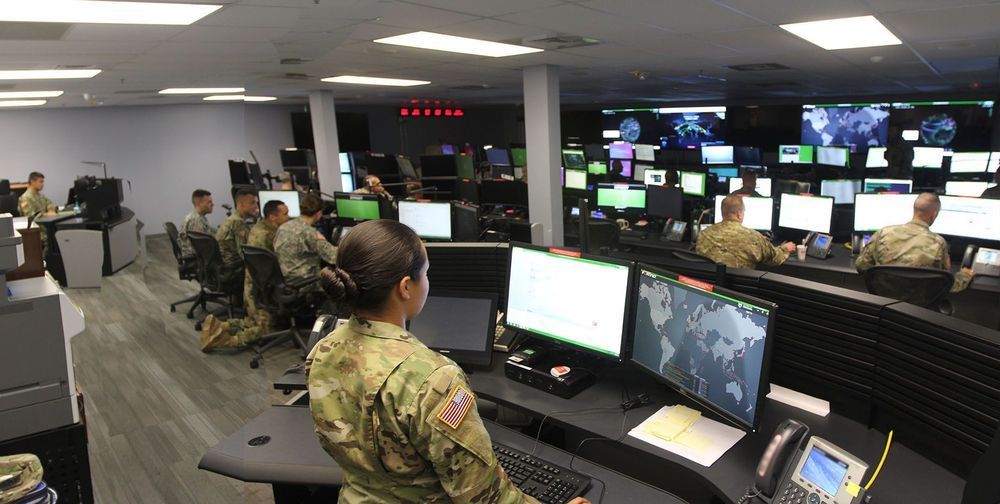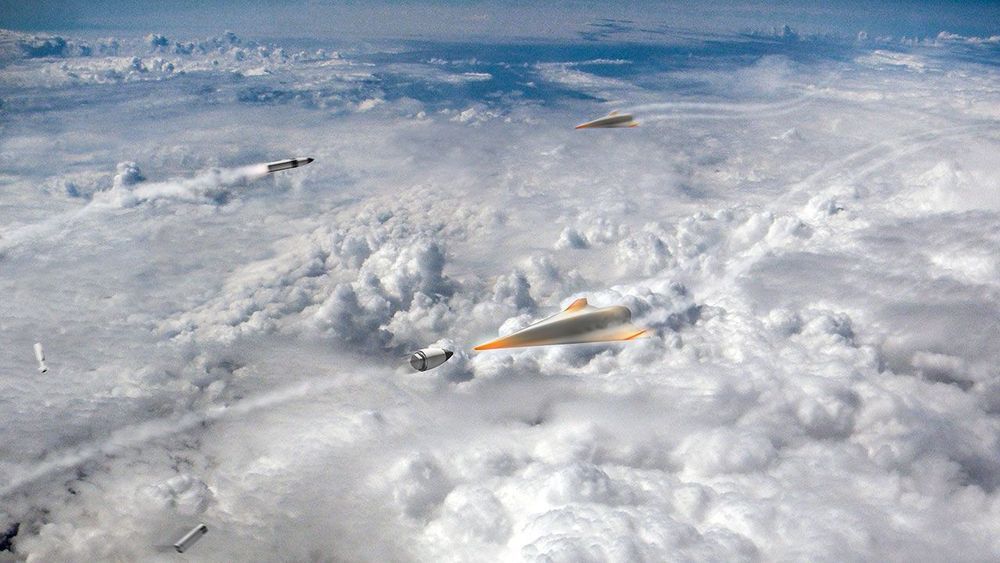Archive for the ‘military’ category: Page 190
Jan 16, 2020
Seeing Around the Corner With Lasers—and Speckle
Posted by Omuterema Akhahenda in categories: military, robotics/AI
Researchers have developed a new way to use lasers to see around corners that beats the previous technique on resolution and scanning speed. The U.S. military is interested for obvious reasons, and NASA wants to use it to image caves. The technique might one day also let rescue workers peer into earthquake-damaged buildings and help self-driving cars navigate tricky intersections.
Researchers from Rice, Stanford, Princeton, and Southern Methodist University have developed a new way to use lasers to see around corners that beats the previous technique on resolution and scanning speed. The findings appear today in the journal Optica.
The U.S. military—which funded the work through DARPA grants—is interested for obvious reasons, and NASA wants to use it to image caves, perhaps doing so from orbit. The technique might one day also let rescue workers peer into earthquake-damaged buildings and help self-driving cars navigate tricky intersections.
Continue reading “Seeing Around the Corner With Lasers—and Speckle” »
Jan 16, 2020
Software detects backdoor attacks on facial recognition
Posted by Saúl Morales Rodriguéz in categories: cybercrime/malcode, engineering, military, robotics/AI
As the U.S. Army increasingly uses facial and object recognition to train artificial intelligent systems to identify threats, the need to protect its systems from cyberattacks becomes essential.
An Army project conducted by researchers at Duke University and led by electrical and computer engineering faculty members Dr. Helen Li and Dr. Yiran Chen, made significant progress toward mitigating these types of attacks. Two members of the Duke team, Yukun Yang and Ximing Qiao, recently took first prize in the Defense category of the CSAW ‘19 HackML competition.
“Object recognition is a key component of future intelligent systems, and the Army must safeguard these systems from cyberattacks,” said MaryAnne Fields, program manager for intelligent systems at the Army Research Office. “This work will lay the foundations for recognizing and mitigating backdoor attacks in which the data used to train the object recognition system is subtly altered to give incorrect answers. Safeguarding object recognition systems will ensure that future Soldiers will have confidence in the intelligent systems they use.”
I experienced these creatures in my town they did not corporealize but as a psychic I can feel them and when you see irregular fog that moves like a wall or with fingers be careful as like I believe these creatures exist.
The creatures of the Mist are the inhabitants of an alternate reality. After a severe rainstorm from the night before, a thick, foggy, unusual mist crept into our world, bringing the creatures with it when a top secret government experiment involving many scientists called the “Arrowhead Project”, intended to peer into other dimensions, went terribly wrong. This allowed the creatures to cross over the spilled portal and into the human realm. The phenomenon first manifested in Bridgton, Maine, and spread across an unknown amount of the U.S., or possibly the entire planet. Due to the thickness of the mist making sight almost useless to them, all the creatures in the mist hunt on the basis of scent. In the novella by Stephen King, it is hinted that the mist plagued the entire world and thus the creatures nearly eliminated humanity; while in the film version, the creatures were only seen in a certain area of America and were exterminated by the military two or three days after the Arrowhead Project went wrong.
Jan 15, 2020
‘We want to win the next war’: US Army will revamp cyber operations to counter Russia and China
Posted by Quinn Sena in categories: cybercrime/malcode, energy, military
As warfare continues to enter the digital realm, the Army plans to transform its cyber operations branch into a full-scale information warfare command, according to a top U.S. general.
The service will convert Cyber Command into the Army Information Warfare Command, Army Chief of Staff Gen. James McConville said at a panel on Tuesday. It’s one of the several modernization efforts the Army is taking on to counter “great power” opponents like Russia and China.
“We’re recognizing the importance of information operations, so our Cyber Command is going to become an information warfare command,” McConville said.
Jan 12, 2020
Engineers design on-skin electronic device providing a personal air conditioner without needing electricity
Posted by Shane Hinshaw in categories: biotech/medical, health, military, wearables
One day, soldiers could cool down on the military battlefield—preventing heat stroke or exhaustion—by using “wearable air conditioning,” an on-skin device designed by engineers at the University of Missouri. The device includes numerous human health care applications such as the ability to monitor blood pressure, electrical activity of the heart and the level of skin hydration.
The findings are detailed in the journal Proceedings of the National Academy of Sciences.
Unlike similar products in use today or other related concepts, this breathable and waterproof device can deliver personal air conditioning to a human body through a process called passive cooling. Passive cooling does not utilize electricity, such as a fan or pump, which researchers believe allows for minimal discomfort to the user.
Jan 12, 2020
FCC Filing Confirms Final Contestant in DARPA’s $12 Million Satellite Launch Challenge
Posted by Genevieve Klien in categories: military, satellites, surveillance
In 2018, the U.S. Defense Advanced Research Projects Agency (DARPA) announced the multi-million-dollar DARPA Launch Challenge to promote rapid access to space within days rather than years. To earn prizes totaling more than US $12 million, rocket companies would have to launch unfamiliar satellites from two sites in quick succession.
“The launch environment of tomorrow will more closely resemble that of airline operations—with frequent launches from a myriad of locations worldwide,” said Todd Master, DARPA’s program manager for the competition at the time. The U.S. military relies on space-based systems for much of its navigation and surveillance needs, and wants a way to quickly replace damaged or destroyed satellites in the future. At the moment, it takes at least three years to build, test, and launch spacecraft.
To ensure that DARPA was incentivizing the flexible, responsive launch technologies the U.S. military needs, competitors would receive information about the site of their next launch fewer than 30 days prior to each flight, DARPA’s rules stated, and only learn their actual payloads two weeks out.
Jan 9, 2020
‘National pride is at stake.’ Russia, China, United States race to build hypersonic weapons
Posted by Derick Lee in categories: military, space travel
Now, DOD is leading a new charge, pouring more than $1 billion annually into hypersonic research. Competition from ambitious programs in China and Russia is a key motivator. Although hype and secrecy muddy the picture, all three nations appear to have made substantial progress in overcoming key obstacles, such as protecting hypersonic craft from savage frictional heating. Russia recently unveiled a weapon called the Kinzhal, said to reach Mach 10 under its own power, and another that is boosted by a rocket to an astonishing Mach 27. China showed off a rocket-boosted hypersonic glide vehicle (HGV) of its own, the Dongfeng-17, in a recent military parade. The United States, meanwhile, is testing several hypersonic weapons. “It’s a race to the Moon sort of thing,” says Iain Boyd, an aerospace engineer at the University of Colorado, Boulder. “National pride is at stake.”
Despite hype and technological hurdles, a hypersonic arms race is accelerating.
Jan 8, 2020
Domestically-developed kamikaze drones to join Turkish army’s inventory as of 2020
Posted by Mike Diverde in categories: drones, engineering, military, robotics/AI
Coming soon to crowd suppression near you…
30 upgraded KARGU (Autonomous Tactical Multi-Rotor Attack UAV) kamikaze drones developed by Turkish defense contractor Defense Technologies Engineering and Trade Inc. (STM) will join the Turkish Armed Forces’ inventory as of 2020 to take part in critical operations in the country’s east and along the Syrian border.
The KARGU battle drone, which was developed by the STM to support the tactical and field needs of Turkish security forces, eliminates targets more efficiently with new features such as enhanced ammo capacity and improved accuracy. The 30 drones will also have the capacity to destroy an entire brigade and warship.
Jan 8, 2020
Kurds call on US to block Turkish military drones from Syrian air space
Posted by Mike Diverde in categories: drones, military, robotics/AI, space
Many times now, I have pointed out that the use of Killer Robots should be a war crime. It might not be a theoretical occurrence anymore.
“Syrian Kurds are asking the Pentagon to block US-controlled air space over north-eastern Syria to Turkish armed drones which they claim are causing significant civilian casualties.”
Unmanned weapons ‘targeting anything they wish to’ as Kurds say Turks have killed 509 civilians and 412 troops.
Continue reading “Kurds call on US to block Turkish military drones from Syrian air space” »


















